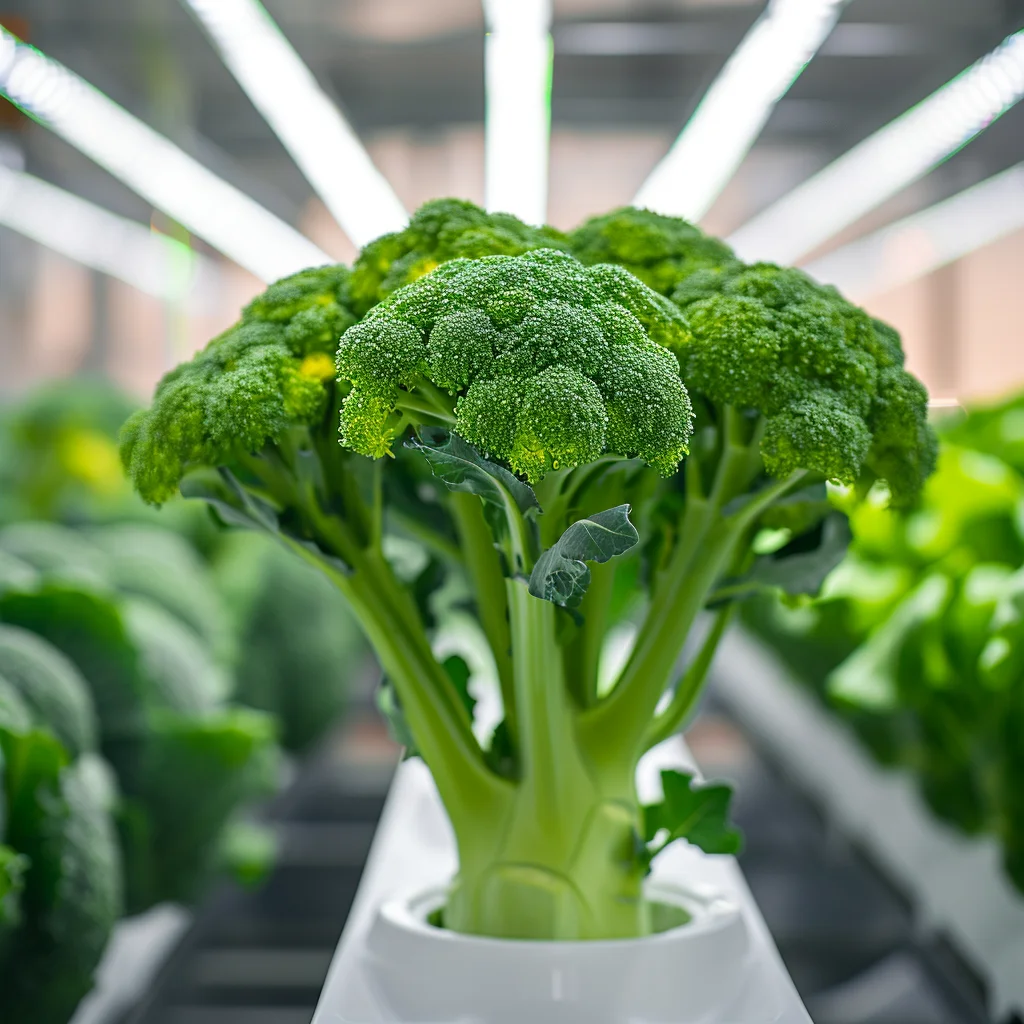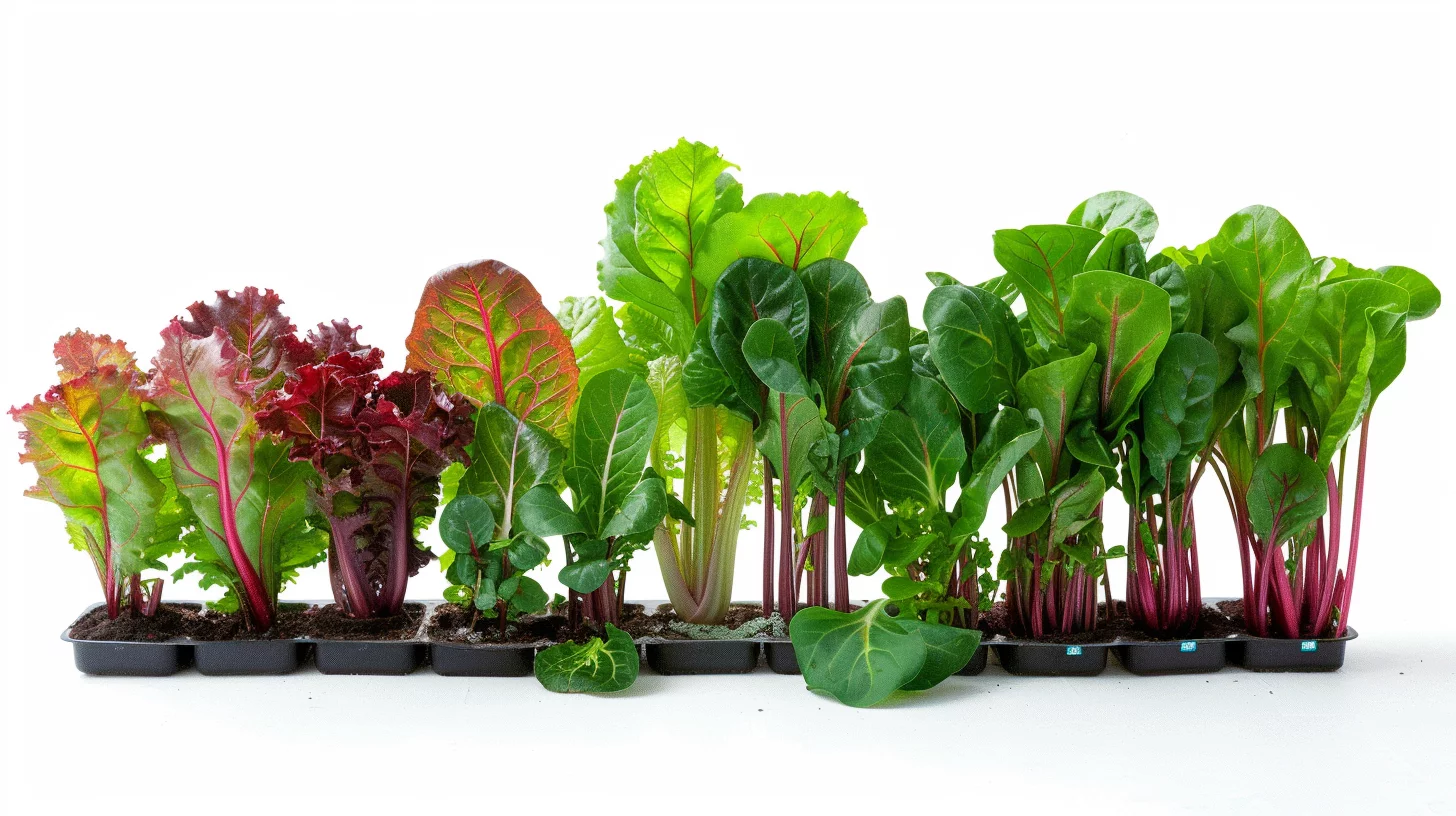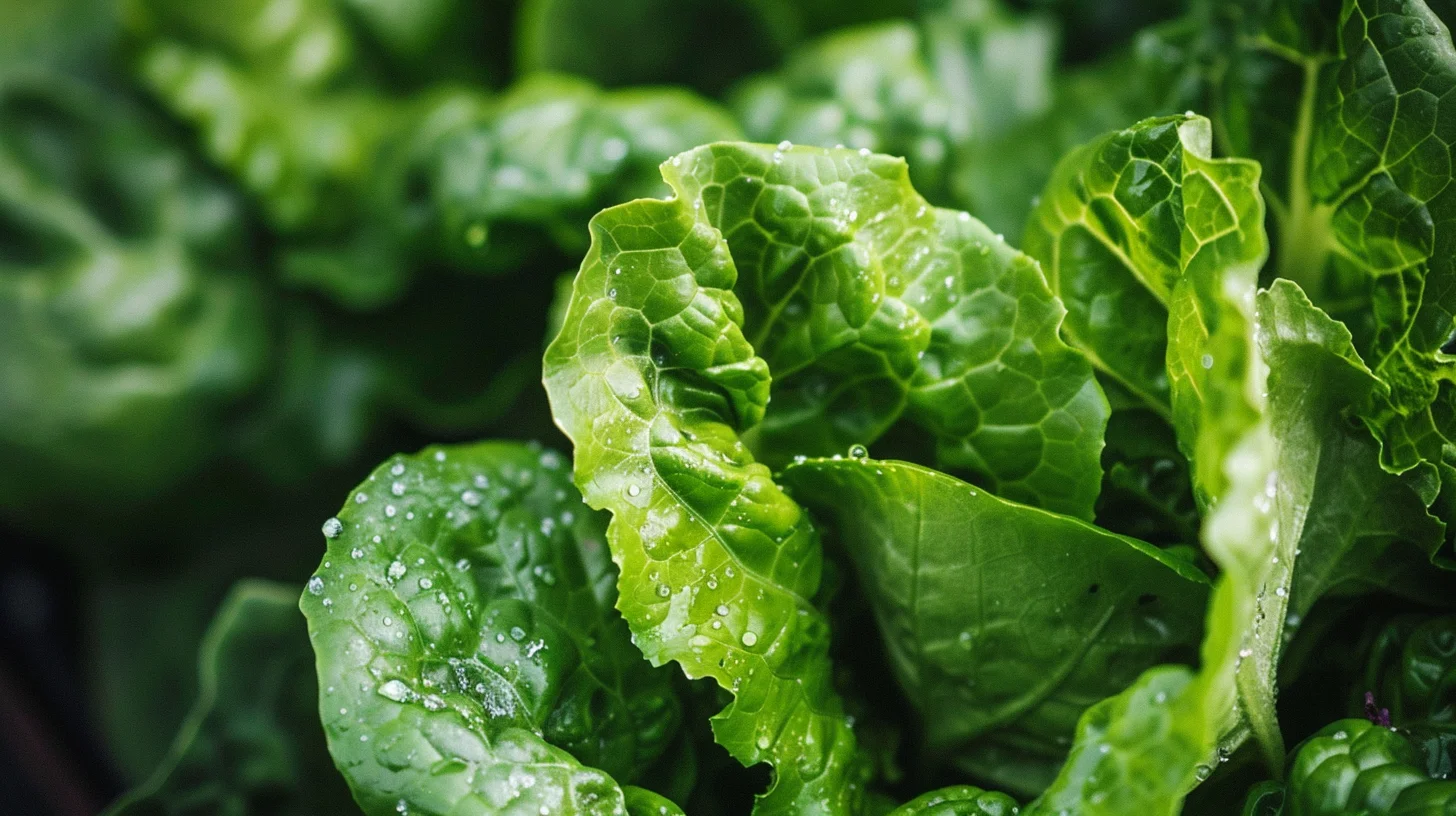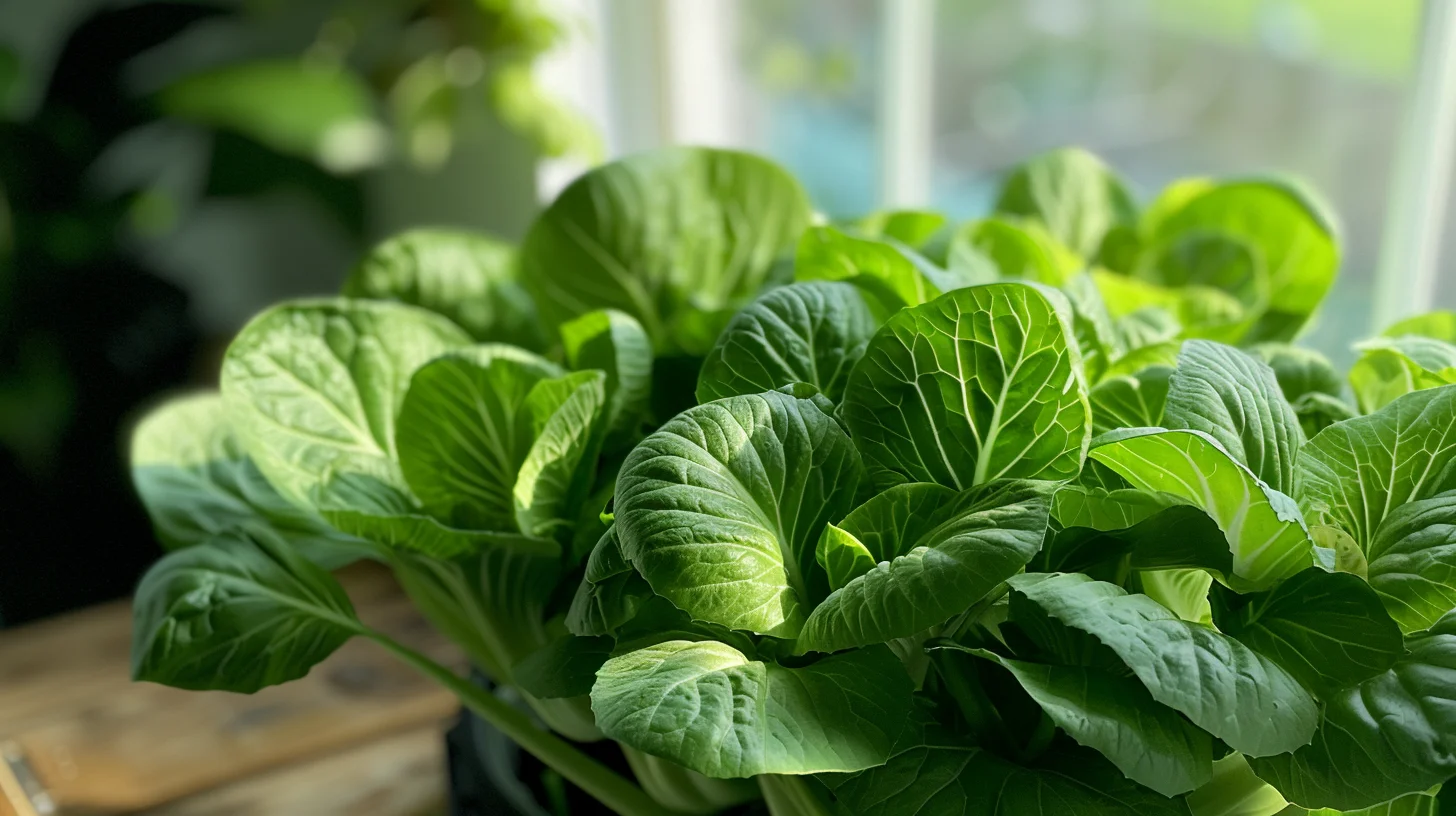Introduction
Hydroponic gardening has been growing in popularity as a way to grow vegetables and herbs without soil. Often touted for its benefits of faster growth rates, higher yields, and reduced disease pressure, hydroponics allows you to precisely control nutrients and growing conditions. But you might be thinking Can You Grow Broccoli Hydroponically? is it even possible to grow broccoli hydroponically?
The answer is yes – broccoli can be grown very successfully in a hydroponic system! When set up properly and cared for, hydroponic broccoli can actually outperform soil-grown broccoli in many ways.
In this complete guide, we’ll cover everything you need to know about growing broccoli hydroponically, including:
The Benefits of Growing Broccoli Hydroponically
Hydroponically grown broccoli has a number of advantages over soil-based broccoli:
- Faster growth rate: With direct access to nutrients and ideal growing conditions, hydroponic broccoli reaches maturity and produces heads faster.
- Higher yields: Hydroponic systems can support higher plant density. More plants per square foot results in higher total yields.
- No soil-borne diseases: Hydroponic plants are not susceptible to fungal/bacterial soil diseases.
- No soil-dwelling pests: You avoid soil-dwelling insects and nematodes trying to munch on roots.
- Weed-free: No need to weed a hydroponic garden, saving you time and effort.
- Precise control: You can meticulously control the exact nutrients, light, temperature and humidity broccoli receives.
- Year-round production: Hydroponic broccoli can be grown in any season, no matter the climate.
With hydroponics, you can grow fresh, pesticide-free broccoli year-round and get higher yields from each plant.
Choosing the Right Broccoli Varieties for Hydroponics
While most broccoli varieties can be grown hydroponically, some cultivars are better suited:
- Arcadia: A popular hybrid with heat tolerance and large, domed heads.
- Gypsy: A variety bred for hydroponic production, forms uniform heads.
- Packman: An early-maturing hybrid, with compact growth habit.
- Waltham: A consistent variety that produces side shoots after the main head is cut.
When selecting a variety, prioritize the following traits:
- Bolt-resistance: Seeks cultivars less prone to premature flowering.
- Compact size: Smaller plant size suits hydro systems with limited space.
- Temperature tolerance: Important if growing in unconventional seasons.
- Uniformity: Look for evenly formed heads for easier harvesting.
Starting with the right varieties gives your hydroponic broccoli the best chance of success.
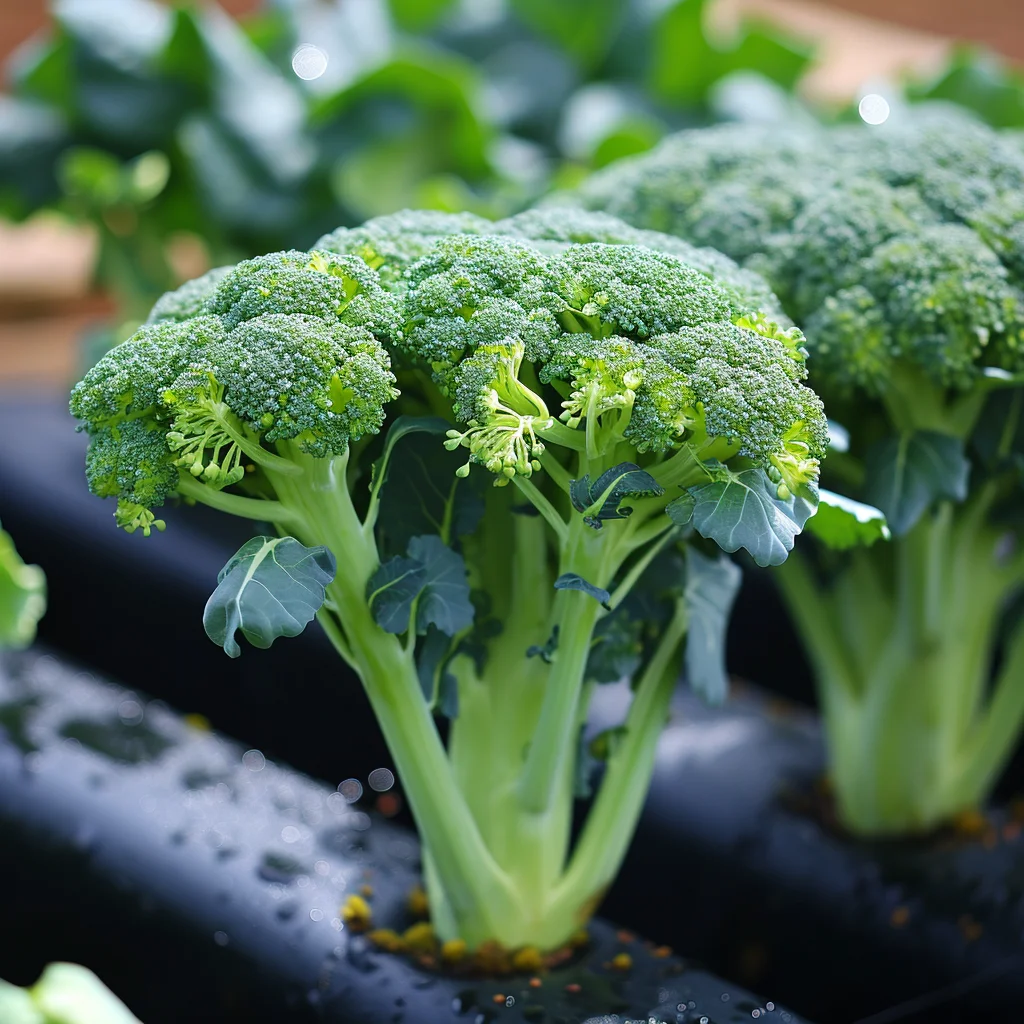
Setting Up a Hydroponic System for Broccoli
Many different hydroponic systems can grow broccoli effectively, each with their own pros and cons:
Common Hydroponic Systems for Broccoli
- NFT: Nutrient Film Technique channels a thin flow of nutrient solution to roots. Requires lots of space.
- DWC: Deep Water Culture with roots suspended in an aerated reservoir. Simple and efficient.
- Aeroponics: Plant roots are misted with a nutrient solution. Grows very fast but higher maintenance.
- Media Beds: Plants grown in substrates like perlite, gravel, or coco coir. More forgiving for beginners.
Broccoli plants have large root systems, so make sure containers or beds provide adequate space. Recommended setups are Dutch bucket systems or vertical hydroponic towers.
Provide constant access to oxygenated water and use larger particle media for uninhibited root growth.
Crafting the Ideal Hydroponic Nutrient Solution
To optimize broccoli growth, the hydroponic nutrient solution must contain the right blend of macro and micronutrients:
Macronutrients
- Nitrogen: Crucial for leafy growth. Maintain 100-150 PPM.
- Phosphorus: Aids root, stem, and head development. Keep 40-60 PPM.
- Potassium: Supports overall plant health. Provide 150-200 PPM.
Secondary Nutrients
- Calcium: Boosts cell wall strength. Add 150-200 PPM.
- Magnesium: Important for chlorophyll production. Keep 50-80 PPM.
- Sulfur: Helps with enzyme formation and vitamin synthesis.
Micronutrients
- Iron: Essential for chlorophyll synthesis.
- Boron: Improves broccoli head formation.
- Copper: Aids enzyme processes.
- Zinc: Necessary for growth hormones.
- Manganese: Required for nutrient uptake.
Target a nutrient solution EC of 2.0-2.4 and a pH between 5.8-6.2 for optimal uptake.
Propagating Broccoli Seedlings for Hydroponics
Starting broccoli from seed? Here are a few tips:
- Start seeds in rockwool, rapid rooter plugs, or seedling cubes to support seeds.
- Use a heat mat to maintain a soil temperature of 70-80°F for quick germination.
- Broccoli seeds usually germinate within 3-5 days when kept warm and moist.
- Seedlings are ready for transplanting in 3-4 weeks, once the second set of true leaves emerge.
- Gradually expose seedlings to lower humidity and grow lights before transplanting. This “hardens off” plants.
Take care when handling delicate young broccoli starts. Transplant them gently by their leaves, not the stem.
Transplanting and Growing Broccoli in a Hydro System
When transplanting broccoli seedlings:
- Space plants 12-16 inches apart in all directions. Broccoli needs room to grow.
- Gently place each seedling into the hydroponic system, taking care not to disturb the roots.
- Maintain temperatures between 60-80°F for optimal growth. Broccoli can withstand frost.
- Keep light levels around 300-600 μmol/m2/s1 from full spectrum LEDs during vegetative stage.
- Aim for a nutrient solution EC between 2.0-2.4 and a pH of 5.8-6.2.
- Monitor new leaf growth and correct any signs of deficiency promptly.
With ideal conditions, heads should mature within 3-4 months after transplanting.
Harvesting Your Hydroponic Broccoli
Timely harvesting is key to get tender, high-quality broccoli heads:
- Look for heads to reach about 6 inches across before harvesting.
- Use a sharp knife to cut the central head, leaving as much stem as possible.
- Harvesting side shoots prompts the plant to produce more shoots.
- Stagger harvesting – take main heads as they mature and side shoots later.
- Eat broccoli as soon as possible after harvest for best flavor and texture.
With proper harvesting technique, a well-cared for plant can yield 1-2 pounds of broccoli or more through its life cycle!
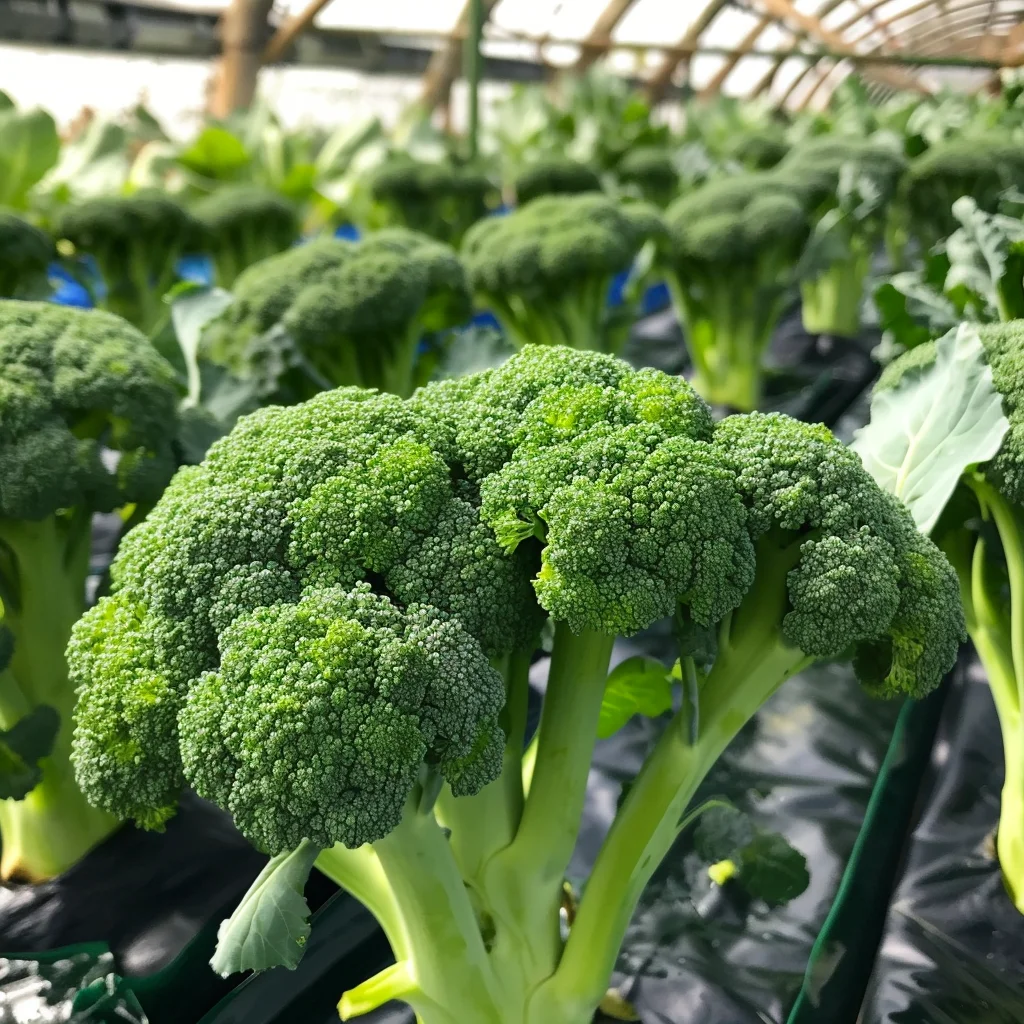
Troubleshooting Common Hydroponic Broccoli Problems
Growing broccoli hydroponically comes with some challenges:
Bolting
- Cause: Early exposure to cold or rapid shift between warm and cold temps. Also planting late varieties too early.
- Solution: Select bolt-resistant variety, maintain optimal temps, and transplant on schedule.
Tipburn
- Cause: Calcium deficiency in rapidly growing leaves.
- Solution: Ensure adequate calcium levels in nutrient solution.
Hollow Stem
- Cause: Boron deficiency during head formation.
- Solution: Increase boron levels before heads form.
Loose Heads
- Cause: Heat or moisture stress during head development.
- Solution: Keep temps and humidity optimal when heads forming.
Catch issues early and address promptly! Test and adjust nutrients regularly to prevent deficiencies.
Example Hydroponic Broccoli Growing Schedule
Here is a sample timeline for growing broccoli hydroponically from seed to harvest:
- Day 1: Start seeds in plugs or cubes. Use a heat mat for best germination.
- Day 14: Transplant seedlings into hydro system.
- Day 28: Begin exposing plants to bloom nutrients.
- Day 35: Top dress with extra calcium to support head growth.
- Day 63: Harvest first main heads when 6 inches across.
- Day 70: Harvest side shoots.
- Day 98: Take final harvest before removing plants.
- Day 105: Discard plants and sanitize system to begin next crop.
Conclusion
Growing broccoli hydroponically absolutely can (and should!) be done. With the right hydroponic setup, nutrients, and care, you can get fantastic, nutrient-dense broccoli without the typical limitations of soil. Plus you can grow it year-round, anywhere!
So don’t be afraid to give hydroponic broccoli a try. Follow this guide to ensure you provide broccoli with the ideal growing conditions. With a robust, fast-growing hydroponic system, broccoli can thrive and produce abundantly.
The key factors for success are:
- Selecting compact, bolt-resistant varieties suited to hydroponics
- Providing adequate root zone space
- Dialing in the optimal nutrient solution
- Maintaining the proper temperature range
- Harvesting heads at their peak maturity
With hydroponics, you take complete control over the plant’s environment. Careful monitoring and prompt adjustments keep plants healthy and happy.
While it takes some initial investment and learning, hydroponic broccoli is ultimately one of the most productive, space efficient ways to grow this nutritious staple crop.
Once you taste the sweet flavor of fresh hydroponic broccoli harvested right at its peak, you’ll never want to settle for grocery store broccoli again!
Whether you’re a small urban farmer or just want the freshest veggies for your family, hydroponic broccoli should absolutely be on your radar. Join the growing movement of soil-free gardeners and enjoy this hearty green all year round!
